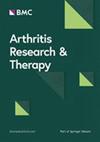不同机械应力下,VWA1和Rac2通过FGF9/FGFR3和p38 MAPK信号通路在髁状软骨细胞代偿和失代偿反应中的作用
IF 4.6
2区 医学
Q1 Medicine
引用次数: 0
摘要
很少有研究关注髁突软骨在不同力学条件下的代偿和失代偿反应及其机制。建立了代偿和失代偿模型。采用氧化锆咬合板建立大鼠体内代偿(咬合抬高0.5 mm)和失代偿(咬合抬高1.5 mm)模型。平行体外模型将髁突软骨细胞置于生理(6%)或病理(18%)循环拉伸应变(CTS)下。通过蛋白质组学分析筛选介导代偿和失代偿状态的关键候选蛋白,并通过qRT-PCR、Western blot分析、免疫组织化学和阿利新蓝染色进行验证。代偿表型在0.5 mm iOVD和6% CTS组中占主导地位,其特征是VWA1表达上调和FGF9/FGFR3通路激活。相反,失代偿标记在1.5 mm iOVD和18% CTS组中普遍存在,显示Rac2升高和p38 MAPK通路诱导。进一步验证表明,Vwa1沉默减弱了6% CTS下的代偿反应,而外源性FGF9则恢复了代偿反应。相反,Vwa1过表达减轻了18% CTS下的失代偿,这一作用被FGFR3抑制所抵消。Rac2敲除降低了18%的CTS失代偿反应,而p38 MAPK激活恢复了这些作用。在6%的CTS下,Rac2过表达加剧了失代偿,通过p38 MAPK抑制是可逆的。VWA1可通过调节FGF9/FGFR3信号通路调节髁突软骨代偿反应,而Rac2可通过调节p38 MAPK信号通路介导失代偿反应,这为制定颞下颌关节骨性关节炎(TMJOA)的精确诊断和治疗策略提供了前景。不适用。本文章由计算机程序翻译,如有差异,请以英文原文为准。
Roles of VWA1 and Rac2 in compensatory and decompensatory responses via FGF9/FGFR3 and p38 MAPK signaling pathways in condylar chondrocytes under distinct mechanical stress
Few studies paid attention to compensatory and decompensatory responses of condylar cartilage under different mechanical conditions and the underlying mechanism. Compensatory and decompensatory models were established. In vivo compensatory (0.5 mm occlusal elevation) and decompensatory (1.5 mm elevation) models were established in rats using zirconia occlusal plates. Parallel in vitro models subjected condylar chondrocytes to physiological (6%) or pathological (18%) cyclic tensile strain (CTS). Pivotal candidates that mediate the states of compensation and decompensation were screened through proteomic analysis, and validated through qRT-PCR, Western blot analyses, immunohistochemistry, and Alcian blue staining. Compensatory phenotypes dominated in 0.5 mm iOVD and 6% CTS groups, characterized by upregulated VWA1 expression and FGF9/FGFR3 pathway activation. Conversely, decompensation markers prevailed in 1.5 mm iOVD and 18% CTS groups, showing Rac2 elevation and p38 MAPK pathway induction. Further validation revealed that Vwa1 silencing attenuated compensatory responses under 6% CTS, while exogenous FGF9 restored them. Conversely, Vwa1 overexpression mitigated decompensation under 18% CTS, an effect nullified by FGFR3 inhibition. Rac2 knockdown reduced decompensatory responses to 18% CTS, whereas p38 MAPK activation reinstated these effects. Rac2 overexpression exacerbated decompensation under 6% CTS, reversible via p38 MAPK inhibition. VWA1 can modulate compensatory responses in condylar cartilage via regulating FGF9/FGFR3 signaling pathway, while Rac2 can mediate decompensatory responses via the modulation of p38 MAPK signaling pathway, which provide prospects for developing precise diagnostic and therapeutic strategies for temporomandibular joint osteoarthritis (TMJOA). Not applicable.
求助全文
通过发布文献求助,成功后即可免费获取论文全文。
去求助
来源期刊

Arthritis Research & Therapy
RHEUMATOLOGY-
CiteScore
8.60
自引率
2.00%
发文量
261
审稿时长
14 weeks
期刊介绍:
Established in 1999, Arthritis Research and Therapy is an international, open access, peer-reviewed journal, publishing original articles in the area of musculoskeletal research and therapy as well as, reviews, commentaries and reports. A major focus of the journal is on the immunologic processes leading to inflammation, damage and repair as they relate to autoimmune rheumatic and musculoskeletal conditions, and which inform the translation of this knowledge into advances in clinical care. Original basic, translational and clinical research is considered for publication along with results of early and late phase therapeutic trials, especially as they pertain to the underpinning science that informs clinical observations in interventional studies.
 求助内容:
求助内容: 应助结果提醒方式:
应助结果提醒方式:


